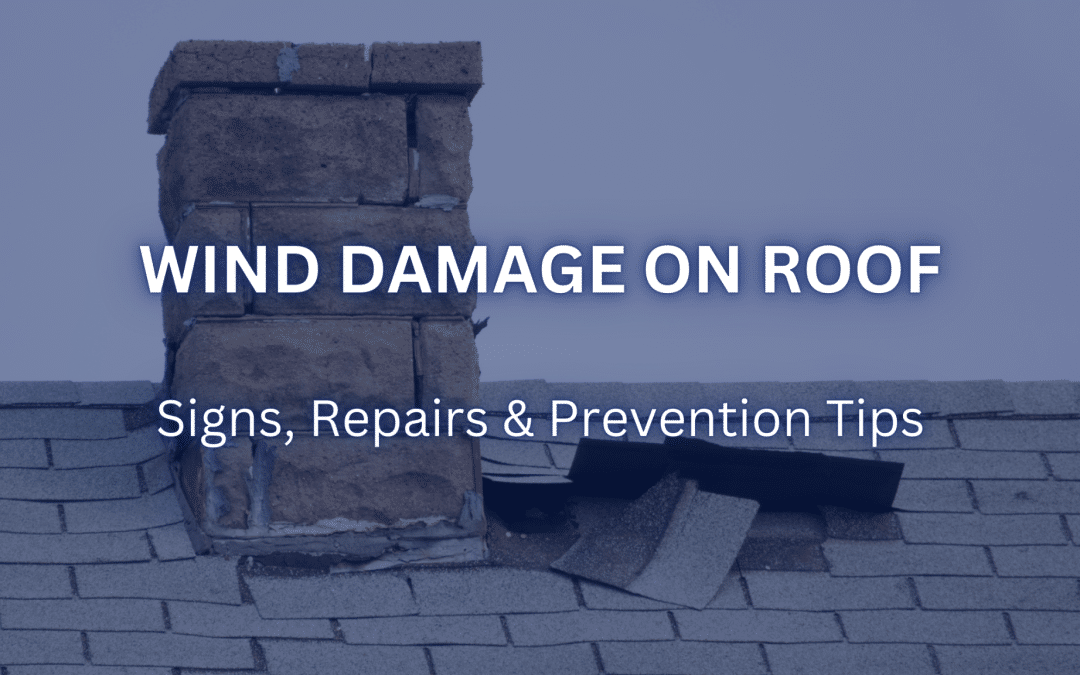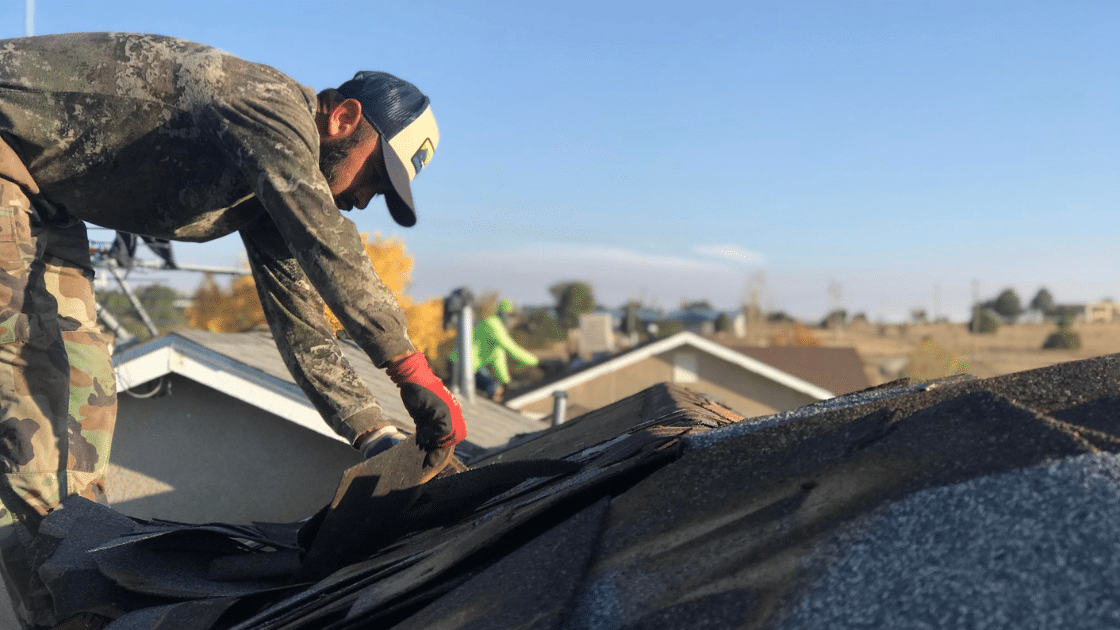Wind Damage on Roof: Common Problems and Professional Solutions
Wind damage on a roof is more common than many people realize. Strong winds, flying debris, or even a severe storm can create hidden roof damage that leads to costly repairs later. Many homeowners don’t notice damage until a roof leak appears in their ceiling. Recognizing the obvious signs of roof storm damage early can save you money and stress.
This guide explains how wind damage occurs, the roofing materials most at risk, the professional roofing contractor solutions available, and the steps you can take to protect your home after a major storm.
How Wind Damages Roofs
The main way wind damages roofs is through a process called “uplift.” As wind speeds increase, low pressure forms over the roof and pries up the edges of asphalt shingles or other roofing materials. This can tear shingles, cause curling shingles, or expose the roof deck and underlying layers.
Certain areas are especially vulnerable:
- Roof edges and corners
- The ridge line
- Around roof vents and overhanging branches
Older roofs or poor roof installation make problems worse. According to FEMA, damaged roofs with weak seals are far more likely to suffer during severe thunderstorms or torrential rains. Over time, this stress can cause structural damage or long-term structural issues in the roof’s structure.
Early Signs of Wind Damage on a Roof
After a wind storm, it’s important to spot wind damage before it grows into significant damage. Even a few shingles out of place can allow water infiltration and further damage.
Missing or Damaged Shingles
Missing shingles are the easiest to see after a strong storm. You may notice damaged shingles, loose ones, or even shingles blown into your yard. Exposed roof decking and minor damage often lead to water leaks if not addressed quickly.
Shingle Creasing, Curling, or Sun Damage
Sometimes shingles don’t blow off completely but show minor issues like creases or curling. Sun damage and repeated strong winds weaken seals, leaving the roofing system vulnerable to wind driven rain and water damage.
Damage to Flashing, Gutters, and Surroundings
Check for bent flashing, clogged gutters, or signs of stress around roof vents. Even broken windows, broken glass, or displaced outdoor furniture near the home may indicate storm damage.
Interior Red Flags
Inside, notice water stains on ceilings or walls. Water leaks, damp insulation, and mold growth are all obvious signs of interior damage caused by wind infiltration. If left untreated, minor issues can escalate into severe damage.
Professional Repair Solutions for Wind Damage
Once you notice damage, contacting a professional roofing company is critical. A visual inspection by an experienced roofing contractor or professional roofing company ensures all necessary repairs are identified.
- Minor damage: A roofing contractor can replace damaged shingles, reseal flashing, and make minor repairs.
- Significant damage: If one section has widespread damage, a partial roof replacement may be needed.
- Severe damage: When a severe storm causes major structural issues, a full roof replacement protects the home best.
A trusted roofing professional will also document roof wind damage with photos to support your insurance claim and guide you through the claims process with your insurance company or homeowners insurance.
Steps to Take After a Windstorm
Taking the right steps after storm damage prevents further damage and helps with repair costs:
- Stay safe: Don’t climb on the roof. Leave inspections to a professional roofing contractor.
- Document property damage: Photograph damaged roofs, broken windows, or damage to your roof caused by flying debris or nearby trees.
- Contact your insurance provider: File an insurance claim quickly. Delays may affect payout from your insurance company.
- Schedule a professional inspection: An experienced roofing contractor can spot wind damage, identify minor issues, and recommend necessary repairs.
Act quickly. Even minor damage or a few shingles missing can let wind driven rain cause water infiltration, water stains, and long-term water damage.
How to Keep Your Roof Protected from Future Wind Damage
While you can’t stop severe storms, you can take preventive measures to reduce roof storm damage.
- Trim nearby trees and cut back overhanging branches to prevent broken glass or damage to your roof.
- Secure outdoor furniture before a strong storm to limit flying debris.
- Invest in wind-resistant shingles or other roofing materials that withstand high winds.
- Schedule regular inspections with a professional roofing contractor to catch minor issues before they become structural damage.
When it’s time for a new roof, consider wind-resistant shingles rated to withstand high winds. These roofing materials are designed to provide protection even during severe thunderstorms and major storms.
Protect Your Roof Before Problems Grow
If you spot damage after a wind storm, don’t wait until a roof leak shows up. Even small issues can lead to further damage, water infiltration, and expensive repairs if left unchecked.
A professional roofing company can give you peace of mind by inspecting your home, documenting any roof storm damage, and helping with the claims process through your insurance company. Acting early means fewer surprises and a stronger roof when the next severe weather rolls in.
At East Mountain Roofing, we take the stress out of storm recovery with thorough inspections, clear guidance, and the care your home deserves. Fill out our contact page today to schedule your inspection and protect your roof before the next storm hits.



